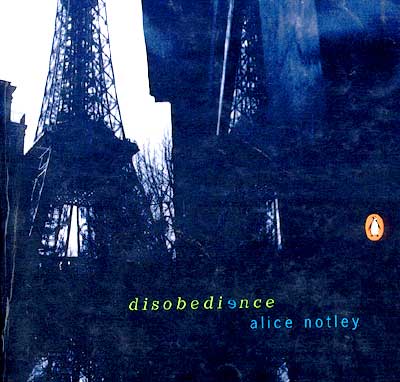
|
Jacket 18 — August 2002 | # 18 Contents | Homepage | Catalog | |
Libbie Rifkin reviews
|
|
In a section of ‘Paris, Capital of the Nineteenth Century’ entitled ‘Louis-Philippe, or the Interior,’ Walter Benjamin describes the beginnings of an aspect of modern life that was taken for granted for most of the twentieth century. ‘Under Louis-Philippe the private citizen enters the stage of history,’ Benjamin writes, and as a result, ‘the living space becomes, for the first time, antithetical to the place of work.’ Separate from the office, indeed constituted by its repression, ‘the phantasmagorias of the interior’ spring up unbidden. For the post-revolutionary bourgeois, the ‘private environment represents the universe.’ For Benjamin, this development leads to the dawn of the detective story, and into an appreciation of one of his favorite writers. ‘His ‘philosophy of furniture,’ along with his detective novellas,’ Benjamin writes admiringly of Poe, reveal him to be ‘the first physiognomist of the interior’ (Reflections, 154-6). It’s a book cover encrusted with jewelry inside (again) (Disobedience, 200).
It feels a little wrong to begin discussing so personal a work as Disobedience under the sign of another writer. Notley has said, ‘I hate the fact that whatever I say or write, someone reading or listening will try to find something out of their reading I ‘sound like’’ (‘The Poetics of Disobedience,’ http://epc.buffalo.edu/authors/notley/disob.html). Indeed her nearly 300-page epic of a voice, dream journal of a pre-menopausal expatriate, autochthonous issue of a visionary comic poet as ‘bitterness in chunks’ sounds like nothing else. But Notley is called to find ‘a holy story...that satisfies without the temporality of successive pages, the terrible linearity of all these successive books’ with a conviction that, in its rhyme with Benjamin writing under threat of Fascism, reveals something quite dark about our current state of emergency (The Scarlet Cabinet, vi). |
| |

Alice Notley, Disobedience, cover detail |
|
Disobedience is broken into five headed and dated sections which are themselves subdivided into smaller pieces bearing talky titles like ‘Where Is the Babylonian Meter with Its Lovely Caesura?’ and ‘Meet Me at La Chapelle for Some More Salami.’ Despite the datelines, the work is more microcosmic than journalistic—building by increments into ‘the single dense tableaux.’ Notley interrupts the continuous narrative of Alette and the deep autobiographical reflection of Mysteries in favor of an energized present, a knobby topography whose ‘coordinates’ are ‘quotidian life and / my life forgotten from sleep or / the unconscious’ (4). The scene of this fusion is both waking Paris from July 30, 1995-August 28, 1996 and the fantasy world of caves that are themselves a combination of Alette’s subterranean metropolis and the partly-dreamed terrain of the town of Needles, California, where Notley spent her childhood.
They keep coming in I won’t enumerate but they’re all there at all (Mysteries 113)
The voice rushing as if to get a word in edgewise in Mysteries, itself a departure from Alette’s story-making meter, gives way to Disobedience’s airier, less beholden pace: Otherwise, the non story continues...
Disobedience breathes easier as a result of these ‘space[s] between official places,’ rendered graphic by the long dashes that break the sections into even smaller units, and figurative—in the final fifth of the book especially—through the image of the room the poet discovers in her wall. It’s a homely place, an unlikely utopia, but it’s all she needs: ‘It’s empty, old / No one moves in, worn linoleum. / Sit down. / I don’t need a better room right now’ (274). Having found this ‘interstitial room,’ writerly crutches like ‘image’ and ‘story’ can drop away, leaving only ‘washed desert light’ and all the time in the world. Special thanks to Rachel Blau DuPlessis for pointing me to several of Alice Notley’s essays and critical pieces, and for helping me really read the work. |
Works citedBenjamin, Walter. ‘Unpacking My Library,’ Illuminations: Essays and Reflections. ed. Hannah Arendt. Trans. Harry Zohn. (New York: Schocken Books, 1968). Benjamin, Walter. ‘Paris, Capital of the Nineteenth Century,’ Reflections: Essays, Aphorisms and Autobiographical Writings. Ed Peter Demetz. Trans. Edmund Jephcott. (New York: Schocken Books, 1978). Notley, Alice. Mysteries of Small Houses. (New York: Penguin Books, 1998).
Notley, Alice and Douglas Oliver. The Scarlet Cabinet. (New York: Scarlet Edition, 1992). |
|
|
|
Jacket 18 — August 2002
Contents page This material is copyright © Libbie Rifkin
and Jacket magazine 2002 |